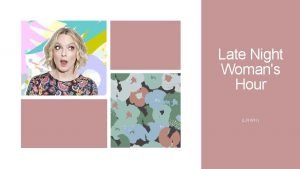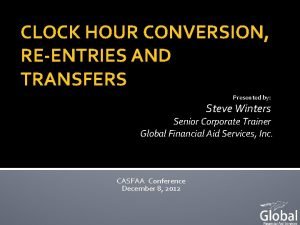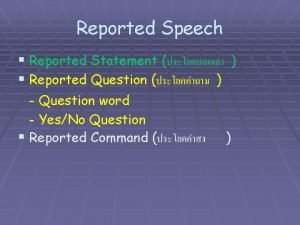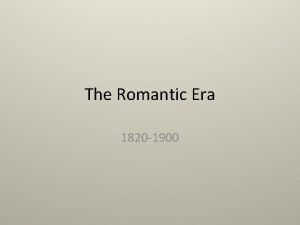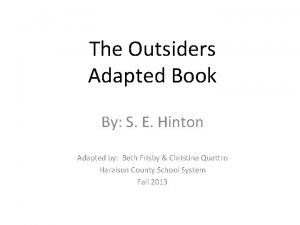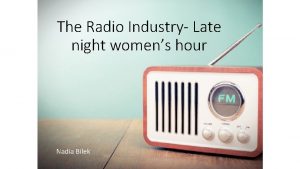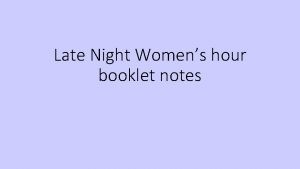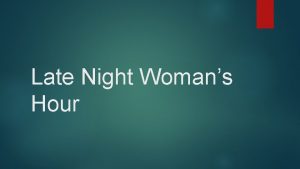Late Night Womens Hour Home MEDIA CASE STUDY









- Slides: 9

Late Night Women’s Hour: Home MEDIA CASE STUDY

Product Context • Late night women’s hour is a spin off programme from Women’s hour – a Radio 4 daily programme. • It is broadcasted once a month, at 11 pm. • The programme is presented by Lauren Laverne and features a group of female panellists. • The radio show began in 2015

Historical Context • Women’s hour (original) was first broadcasted in 1940. • A one hour programme targeting the minority audience – females in a patriarchal society. • Previously, radio was targeted towards a male audience. • The radio programme includes open discussions, showing a progression in society and the equality between men and women

Institution and economics • The BBC is a public broadcasting service – broadcasts for the benefit of the public rather than profits. • The BBC gain their finance from the licensing fee - £ 147 a year. The licensing fee allows the public to consume TV and radio from different providers. • 1922: The BBC aims to inform, educate and entertain. Niche: Denoting or relating to a product/service/interest towards a specific group of the population

Technological change and media production, distribution and circulation and the impact of digitally convergent media platforms Scheduling: Late night women’s hour is broadcasted at the 11 pm timeslot. Audiences can download the programme on their devices and listen when it is convenient for them. DAB (digital audio broadcasting) gives broadcasters free to create more content that would be air after the watershed.

Theoretical approaches – Power and media industries (Curran and Seaton) • Programmes, such as late night women’s hour, challenges the idea of the media being run by those who are driven by economical power and profit. • It can also support Curran and Seaton’s theory of socially diverse patterns of ownership as it creates a situation for varied product. This can lead to risks being taken with the programme. • The success and growth of the podcasts occurs from the range of different topics that are discussed. • The podcast is able to reach a global audience, widening the target audience.

Audience: Social and cultural context • Stereotypical Radio 4 listener is often educated with a degree – managerial/senior or educational job. Typically male. • Lauren Laverne was a former member of an indie-rock band during the 1990 s. She is not they typical choice for a radio 4 presenter. • A male response might be uncomforted with the topics discussed with a panel of females. Orientates around female subjects.

Audience targeting Late night women’s hour is a prime example of BBC’s aim to entertain, inform and educate. The programme’s discussions educates their audiences on the importance of feminism. The programme also targets a younger audience. (late teens to early 30 s. )

Feminist Theory • Late night women’s hour is a radio programme for women about women. The show has a central focus on women and their importance in society. It also creates a safe place for female’s to discuss important topics within a patriarchal society. • The programme ‘Home’, discusses challenging topics and how women are placed within a certain environment, the home sphere or the public sphere.

